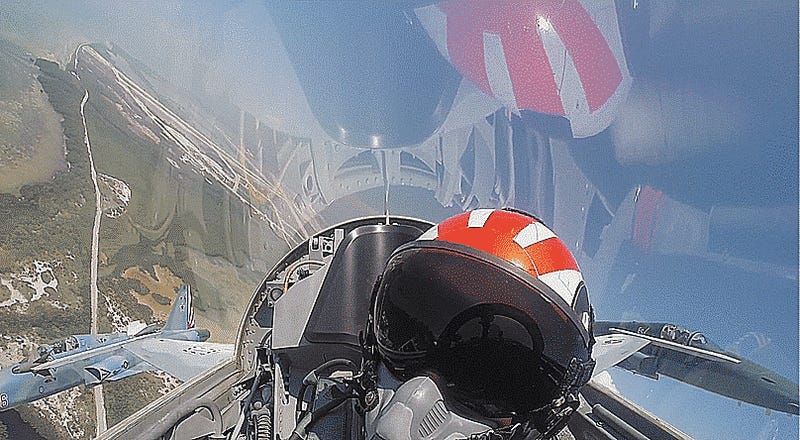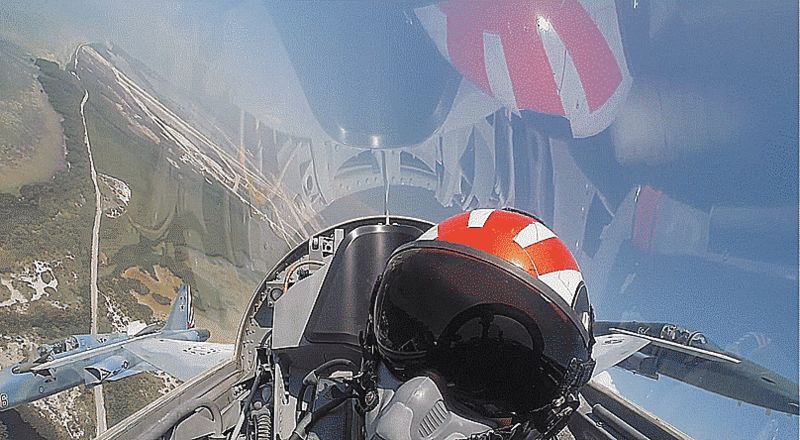
VFC-111, the Sundowners, provide fleet adversary support with their F-5Ns out of gorgeous Key West, Florida. For a recent air show there, headlined by the Blue Angels, the squadron put together their own little four-ship demo team, and by the looks of the video below they did not disappoint.
http://foxtrotalpha.jalopnik.com/jose-fuji-ramo…
Here is a link to the video if you would like to watch it full screen.
Advertisement
The Sundowners trace their roots way back to World War II but in more recent times the squadron rose again out of a nearly-constant detachment of VFC-13 F-5s that were sent from Naval Air Station Fallon in Nevada to provide adversary support out of Key West. Eventually, this detachment became a full-fledged squadron, and thus the Sundowners were born again, this time with the designation as VFC-111 (as in fighter composite squadron), not VF-111.
Sponsored
http://foxtrotalpha.jalopnik.com/a-topgun-instr…
The unit’s mix of reserve and active naval aviators trains with everyone from the Navy’s most experienced fleet pilots to those that are still learning how to employ their Hornets or Super Hornets as weapons. In doing so they mimic a wide range of tactics used by potential enemy air arms and can adapt their flying techniques to replicate different threat aircraft.
The Sundowners’ F-5s are instantly noticeable by the “rising sun” motif on their tails and shark mouths on their noses. Although the F-5 is geriatric by modern fighter standards, its small visual and radar signature, high maneuverability, and low cost of operation and simplicity still make them valuable tools for dissimilar air combat training (DACT.) Some of the Navy’s F-5s have received jamming equipment where their 20mm cannons once were, making them even more wily.
Still, these jets will either have to be replaced in the coming decade or will require deep upgrades to keep in the air and stay tactically relevant. A radar, like the Israeli-built EL/M2032, would offer a huge leap in capability for these F-5s, as would a helmet mounted sight and modern data-link system. The problem is money. The Navy is already shuttering squadrons and facing a looming fighter gap, and although this type of training remains vitally important, it’s not at the top of the Navy’s priority list.
Advertisement
Although the U.S. Air Force has added T-38s to F-22 squadrons for cost-saving aggressor duties, they have shuttered one of only three of their dedicated adversary squadrons last year, and it is possible that the Navy could do the same. Currently VFC-13, VFC-111, with their cost-effective F-5s, and VFC-12 and VFA-204, with their aging Hornets, provide dedicated adversary support (nearly dedicated when it comes to VFA-204).
http://foxtrotalpha.jalopnik.com/usafs-dubious-…
The problem is that the possibility of aerial engagements and near-peer state warfare is not decreasing, but increasing. Additionally, with America’s low observability (stealth) monopoly degrading, and the enemy’s electronic attack capabilities increasing, not to mention ever more strict rules of engagement, the chances for within-visual range combat are also growing.
With this in mind, America’s air arms should be doubling down on the type of training VFC-111 provides. Whether this be via private contractors or by upgrading and expanding established aggressor squadrons is up for debate, but the training is essential and will be for the foreseeable future.













